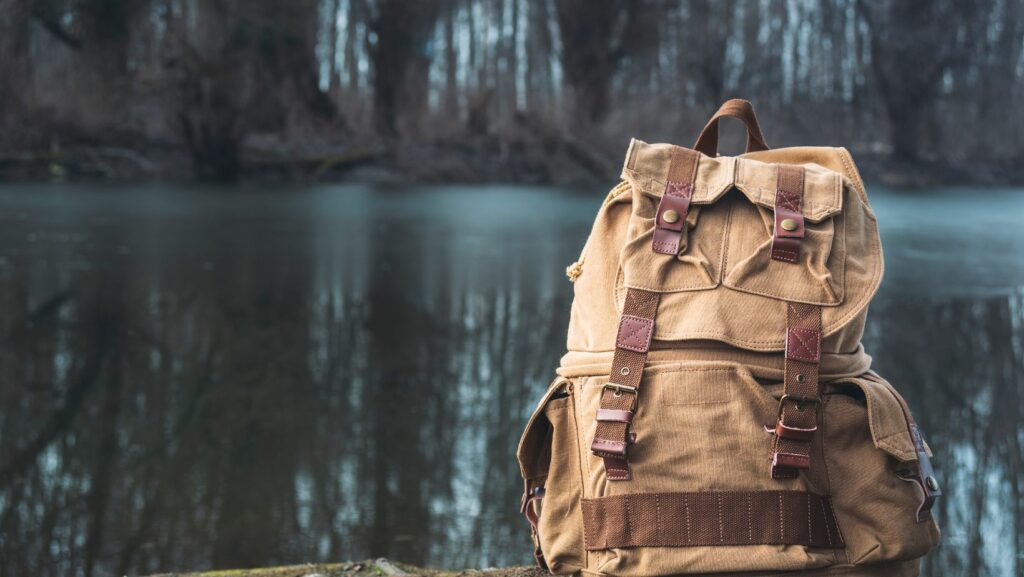Imagine strolling through the bustling streets of Tokyo, hiking the rugged trails of Patagonia, or navigating the charming alleyways of Rome – all with the perfect travel companion on your back. That’s the magic of a well-chosen travel backpack.
Travel backpacks are the Swiss Army knives of the luggage world. Unlike your everyday school or work backpack, these specialised bags are designed with the unique needs of travellers in mind.
What Sets Travel Backpacks Apart?
Here’s what makes a travel backpack stand out:
- Optimised for travel. Travel backpacks often feature a clamshell opening, allowing you to pack and access your belongings like a suitcase.
- Carry-on compatibility. Many travel backpacks are sized to meet airline carry-on requirements, saving you time and money on checked baggage fees.
- Comfort for long hauls. With padded shoulder straps, sternum straps, and sometimes waist belts, these packs distribute weight evenly for comfortable wear during long journeys.
- Durability. Built to withstand the rigours of travel, these backpacks often use tough, weather-resistant materials.
- Security features. Many travel backpacks include lockable zippers and hidden zippered pockets to keep your valuables safe. Some may also feature a lockable padded laptop compartment should you need to bring your laptop or tablets with you.
Key Features to Look For
When shopping for a carry-on backpack, keep an eye out for these essential features:
Size and Capacity
Travel backpacks typically range from 30 to 45 litres. Here’s a quick guide:
- 30-35L: Lightweight backpack ideal for weekend trips or minimalist travellers
- 35-40L: Perfect for most travellers on trips lasting a week or more
- 40-45L: Suitable for longer trips or those who need to pack more gear
Comfort and Support
Look for:
- Adjustable and cushioned shoulder straps
- Sternumstrap for stability
- Padded back panel for comfort and airflow
- Hip belt to distribute weight (especially important for larger packs)
Organisation
Seek out backpacks with:
- Multiple compartments for easy organisation
- Laptop sleeve for digital nomads
- Internal and external pockets to easily access your essentials
Durability and Materials
Opt for:
- Water-resistant or waterproof materials
- YKK zippers (known for their reliability)
- Reinforced stitching in high-stress areas
Security Features
Consider:
- Lockable zippers
- Hidden pockets for valuables
- RFID-blocking pockets for digital security
How to Choose the Right Travel Backpack
Selecting the perfect travel companion from reputable backpack brands like Zoomlite is a personal decision.

Here are crucial things to consider:
- Your travel style. Are you a city hopper or an off-the-beaten-path adventurer?
- Trip duration. Weekend getaways require different packing than month-long expeditions.
- Climate and activities. Will you need space for bulky winter gear or specialised equipment?
- Comfort. Try on backpacks with weight to ensure they fit your body comfortably.
- Airlines. Check the carry-on size restrictions for airlines you frequently use.
Packing Tips for Travel Backpacks
Efficient packing is crucial for maximising the potential of your travel backpack. Here are strategies that will help you pack like a pro:
Use packing cubes
Packing cubes are game-changers for backpack (and carry-on luggage) organisation:
- Colour code: Assign different colours to various categories (e.g., blue for tops, red for bottoms).
- Compression cubes: These squeeze out excess air, saving even more space.
- Modular packing: Use cubes to create a customised system that works for your travel style.
Rolling technique mastery
Rolling clothes isn’t just about saving space:
- Tight rolls: The tighter the roll, the less space it occupies.
- Bundle wrapping: For wrinkle-prone items, try wrapping them around a core object.
- Ranger rolling: A military technique that keeps clothes compact and wrinkle-free.
Strategic layering
Think of your backpack in terms of layers:
- Bottom layer: Pack bulky, less-used items like jackets or towels.
- Middle layer: Place heavier items like shoes or books close to your back.
- Top layer: Keep frequently used or quick-access items here.
Maximising every nook and cranny
- Stuff sacks: Use small stuff sacks for loose items like socks or underwear.
- Shoe space: Fill shoes with small items or rolled socks.
- External pockets: Utilize these for items you need quick access to.
Tech-smart packing
For digital business travellers:
- Cable management: Use small pouches or organisers for cables and chargers.
- Tech stack: Layer your devices with the heaviest at the bottom, closest to your back.
- Power bank placement: Keep this accessible for on-the-go charging.
Liquid and toiletry management
- Solid alternatives: Opt for solid shampoo, soap, and deodorant to save space and avoid leaks.
- Decant: Transfer liquids into smaller, travel-sized containers.
- Seal it: Use plastic wrap under screw-top lids to prevent leaks.
Clothing selection strategies
- Versatile items: Pack pieces that can be mixed and matched.
- Layering system: Pack clothes that can be layered for different climates.
- Fabric choice: Opt for quick-dry, wrinkle-resistant fabrics.
Weight distribution wisdom
- Heaviest near spine: Place weightier items close to your back for better balance.
- Balanced sides: Distribute weight evenly on both sides of the backpack.
- Top-heavy avoidance: Keep heavier items lower to prevent toppling.
Compression techniques
- Vacuum bags: Great for bulky items like jackets or sweaters.
- Rubber bands: Use these to keep rolled clothes tight.
- Sit on it: Gently compress your packed backpack to squeeze out excess air.
Accessibility planning
- First night essentials: Pack items you’ll need immediately upon arrival in an easily accessible spot.
- Weather preparedness: Keep rain gear or sun protection near the top or in external pockets.
- Document placement: Store important documents in a secure yet accessible compartment.
Multi-purpose items
- Sarong/large scarf: Can serve as a beach cover-up, blanket, or makeshift curtain.
- Carabiners: Attach water bottles, shoes, or wet clothes to the outside of your pack.
- Dry bags: Use these for organising and as laundry bags or even pillows in a pinch.
Eco-friendly packing
- Reusable containers: Bring collapsible food containers and water bottles.

- Cloth bags: Pack a few lightweight cloth bags for shopping or organising.
- Bamboo utensils: Lightweight and eco-friendly alternative to plastic.
How to Care for Your Travel Backpack
Here are care tips for ensuring your versatile travel backpacks last for many adventures:
- Clean it regularly according to the manufacturer’s instructions.
- Store it in a cool, dry place when not in use.
- Avoid overpacking, which can strain zippers and seams, especially if you’re using lightweight backpacks.
- Repair small tears or loose threads promptly to prevent further damage.
Final Words
A great travel backpack is more than just a bag – it’s a trusted companion on your global adventures. By choosing the right travel pack and packing it wisely, you’ll be ready to explore the world with comfort and ease. Whether you’re planning a weekend city break or a round-the-world expedition, the perfect travel gear is out there waiting to join you on your next journey.
So, gear up, pack smart, and get ready to create unforgettable memories – your adventure begins now!
